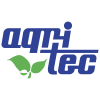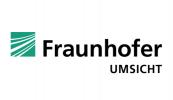Context
Despite the research into the potential of natural fibre-reinforced thermoplastics, and the corresponding positive results in terms of physical properties and ecological impact, the widespread valorisation of this new material is still lacking.
The conversion to large-scale applications has already been carried out successfully in neighbouring countries. However, there is a significant difference in approach. Whereas in the neighbouring countries cheap fibre materials are always chosen, in Flanders only the expensive textile flax fibres were researched.
Furthermore, there is a need for sustainable and recyclable materials and more applications for the available large quantities of plastic recyclates. Plastic processing companies are increasingly urged by their customers to offer new "green" materials for their end applications. In some cases, this even allows for a limited increase in cost price. When such a material becomes available to processors, there is only a limited learning curve to be gone through in order to use it in a production environment. Additional investment in machinery is rarely needed.
Thanks to the knowledge in the field of natural fibre-reinforced thermoplastics that the KU Leuven ProPoLiS research group and Centexbel-VKC have built up in several projects (Flaxhemplast, Valorflax, Biocompal), an answer can now be given to the above mentioned needs.
By combining two waste flows (straw flax unsuitable for textile production) and plastic recyclates, a new sustainable and recyclable material is developed. The research groups involved in the project have the necessary knowledge to select the basic raw materials, produce the new compounds and process it into high-quality injection-moulded products. This knowledge will be transferred to the target companies.
Objectives
The general objective of the RePlaFlax project is the development and dissemination of the necessary knowledge to effectively use agricultural residues from flax cultivation as reinforcement material in polyolefin and PLA plastics. The starting point is recycling material flows or virgin materials in a closed loop recycling system.
The envisaged knowledge will enable companies to valorise residual materials in new applications.
Specific objectives
- Determine the relevant physical properties of the selected flax-based waste streams. (measurement methods, numerical results as the inevitable variations on these properties)
- Research into adhesion between the thermoplastic recycling materials and the flax fibres. The adhesion will be determined on micro level as well as on meso level.
- A clear protocol to compose and process the material compositions (flax-PP/PE and flax-PLA) by means of injection moulding. In order to make structural numerical simulations possible, an elastoplastic material model of the compounds will be developed.
- Elaboration of at least 4 company-specific case studies in which the flax-reinforced compounds are used on an (semi-)industrial scale
Targeted companies
The RePLaFlax project results will enable us to provide knowledge that will be of economic benefit to at least 3 sectors.
- Flax processors will be able to valorise their straw flax
- Recyclers will obtain new applications for plastic recyclates
- Plastic processors will obtain a new material to be used in existing and new applications
Project Partners










